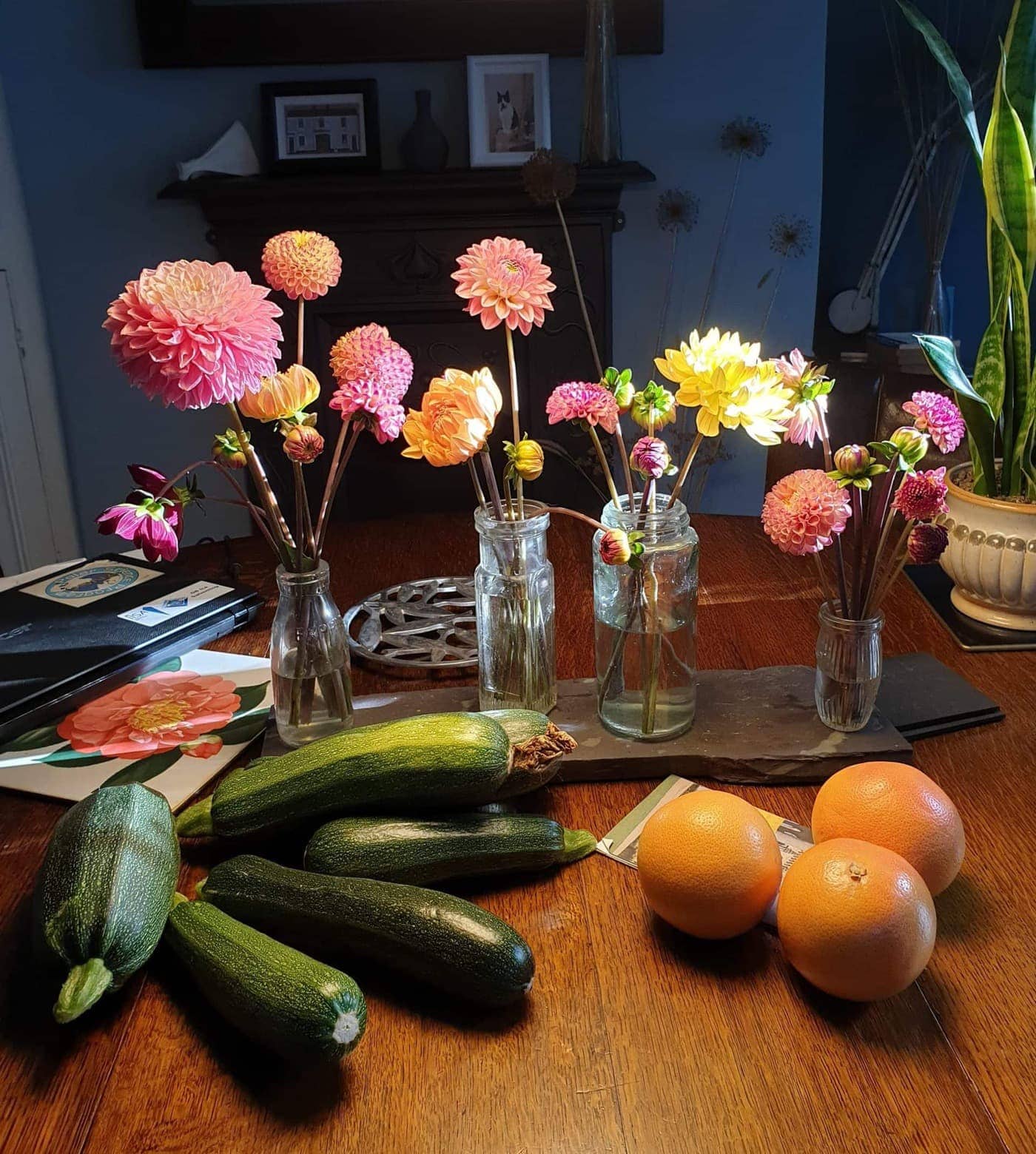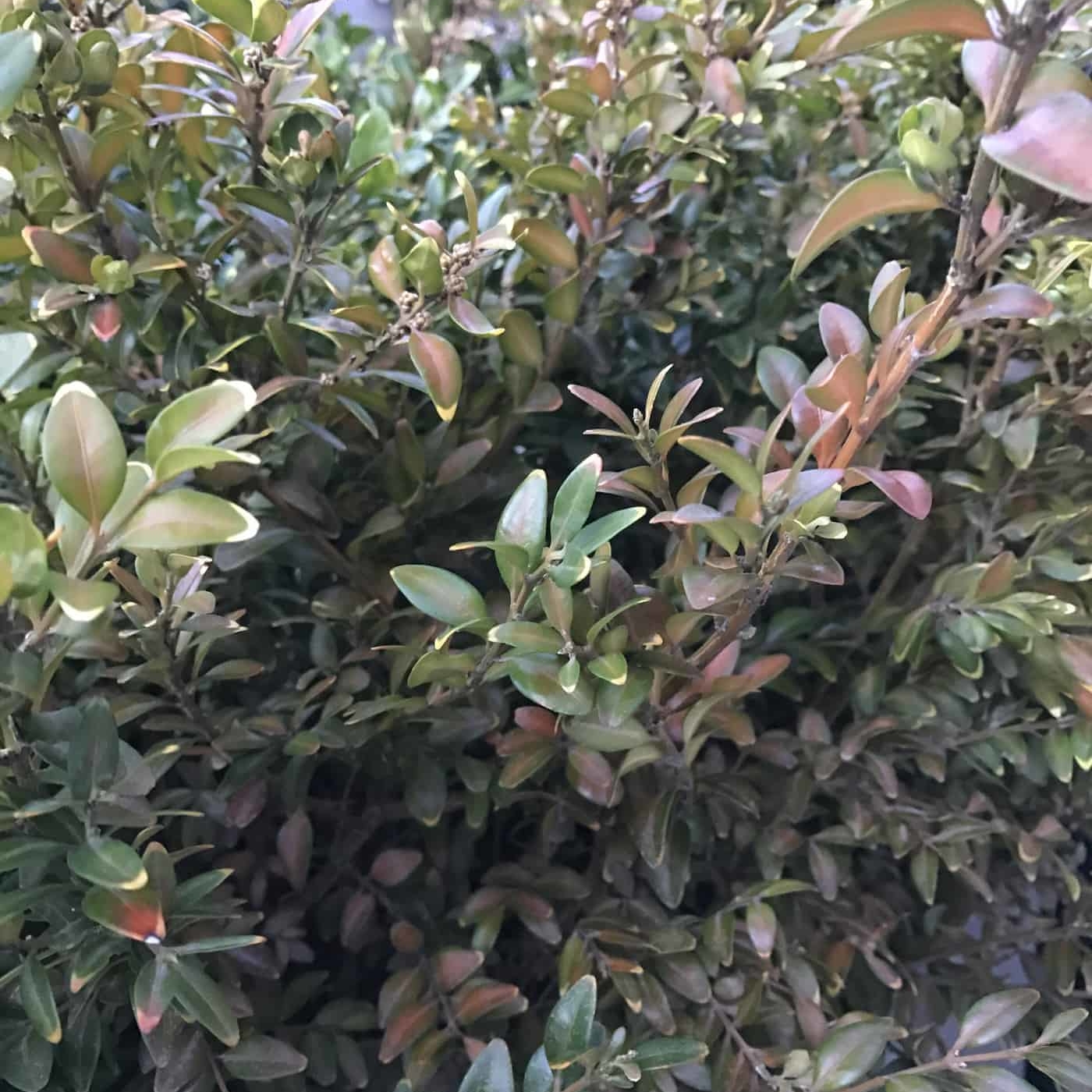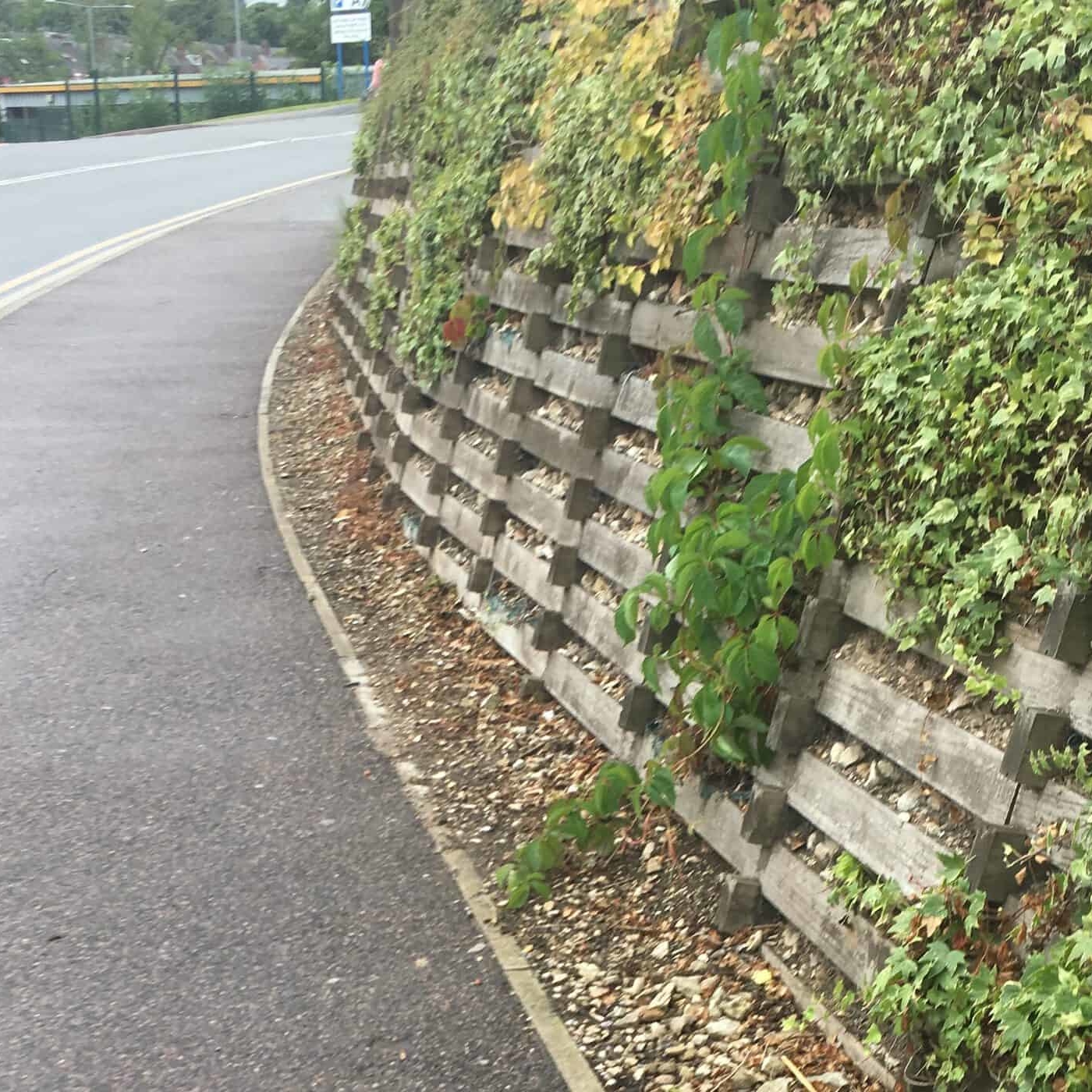In 2020 I dedicated a whole bed and a half on my allotment to growing dahlias. First, I’ll show you what I grew and how they did. Then I’ll show you some of the ‘behind the scenes’ dahlia care.
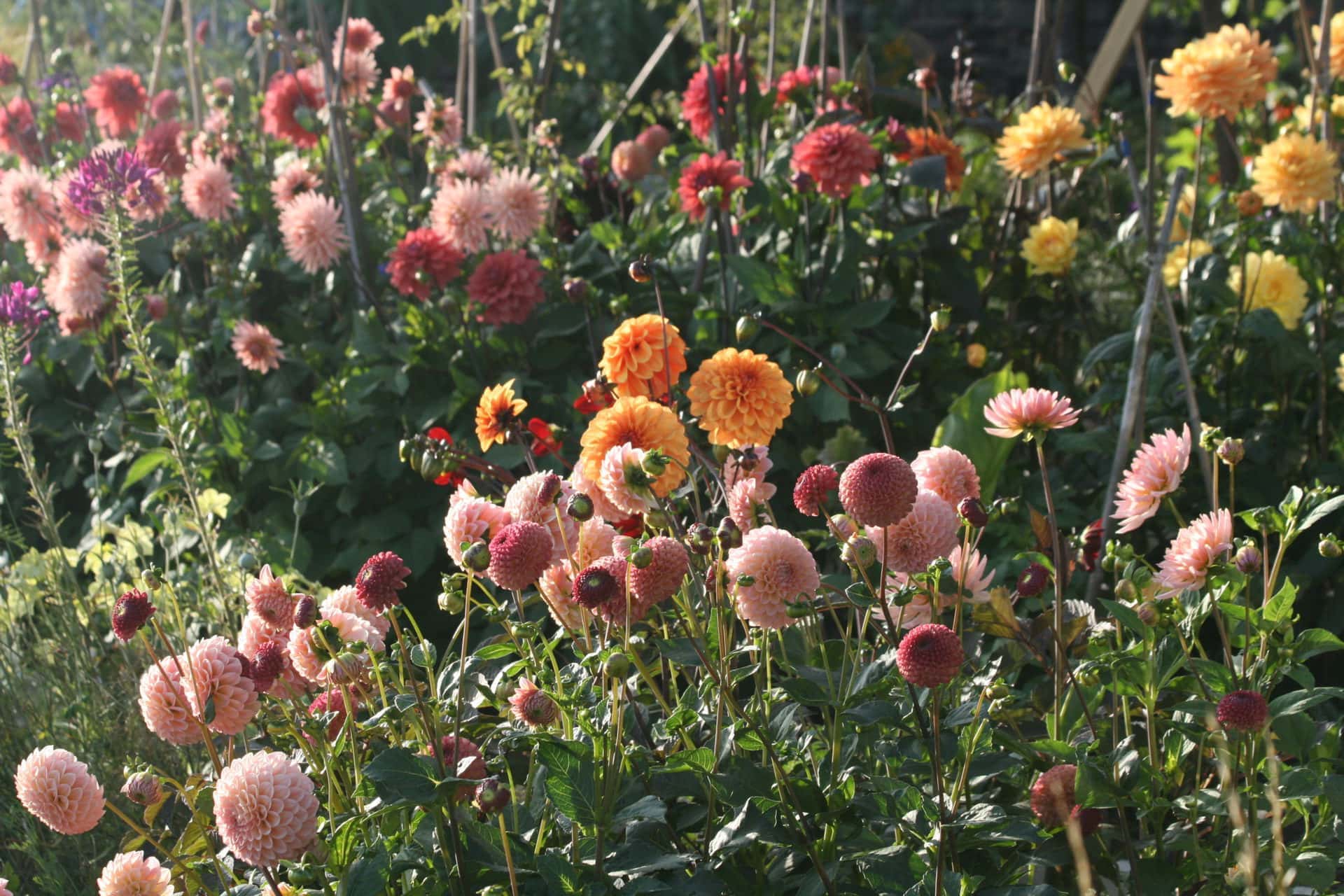
My allotment is on an exposed south-facing hillside on the edge of the Pennines, northernmost Sheffield. The soil is a heavy but well-drained clay-loam, mostly planted with hardy perennials and some vegetable beds too. A sunny aspect and rich soil is good for growing dahlias, but the wind is a challenge.
I’ve dabbled in growing dahlias for a few years, giving them the same rough treatment my hardy perennials get. They did not thank me. Treat ’em mean and keep ’em keen just doesn’t work for these exuberant moisture-needing heavy feeders that require a little staking and mollycoddling to perform.
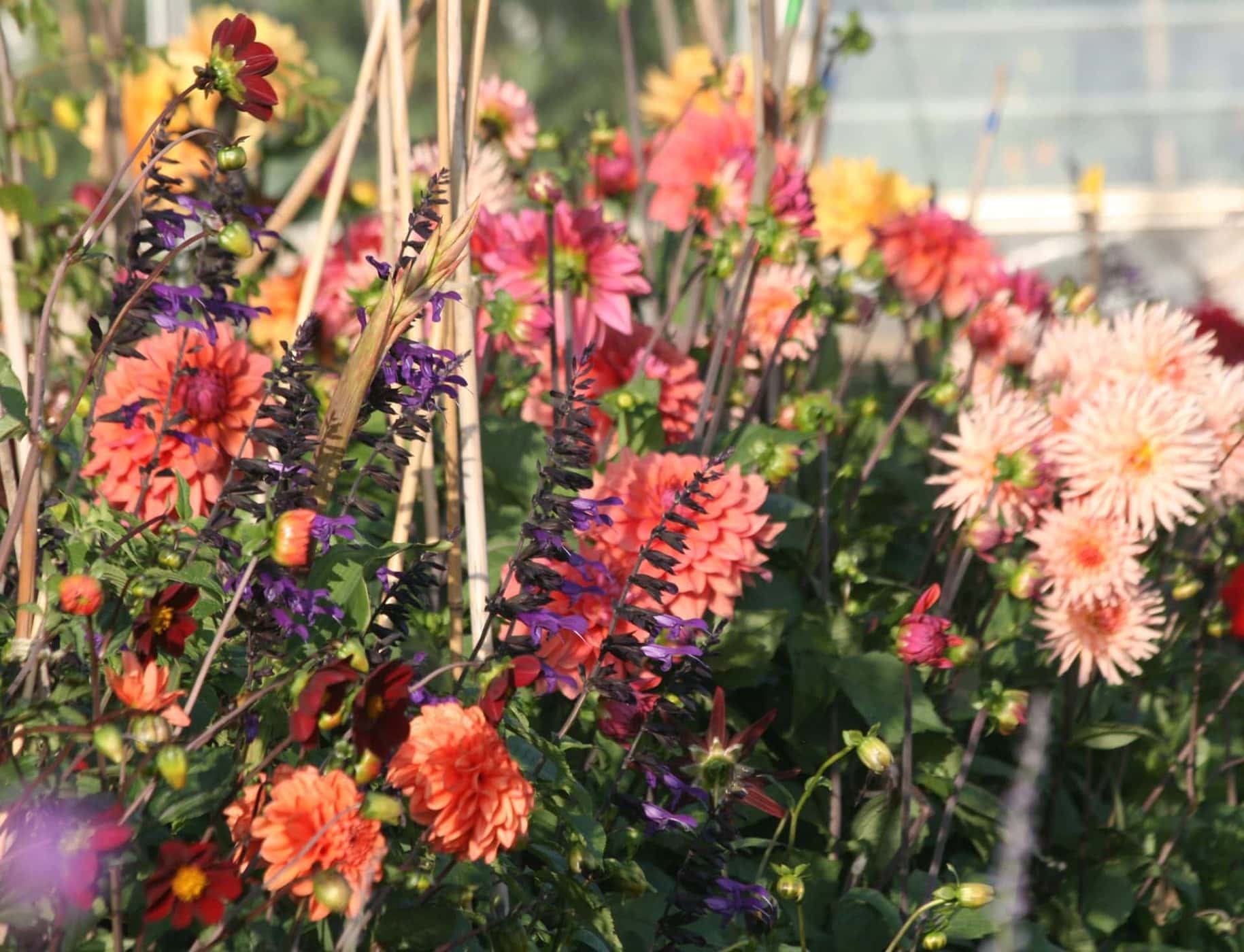
To keep things simple, I dedicated a whole area to tender perennials, with annuals such as Californian poppy (Eschscholzia) and corn cockle (Agrostemma) direct sown to fill any gaps. Mostly dahlias, with a few salvias and cannas in the mix too. I enriched the soil with rotted horse manure before planting.
Many dahlia varieties flower so profusely with good sun and a weekly feed, I was pretty much completely live-heading most plants every weekend, bringing home a few buckets stuffed with heads just bursting into bloom. Any heads a bit passed their peak were cut and composted, and buds not yet bursting left to develop. Ideally, it is best to disbud the stems, pinching off side-buds so all the energy of each stem focusses on just one bloom. That way you get whopping big flowers with nice long stems, but fewer of them. I am content with more, smaller flowers on shorter stems, and less work.
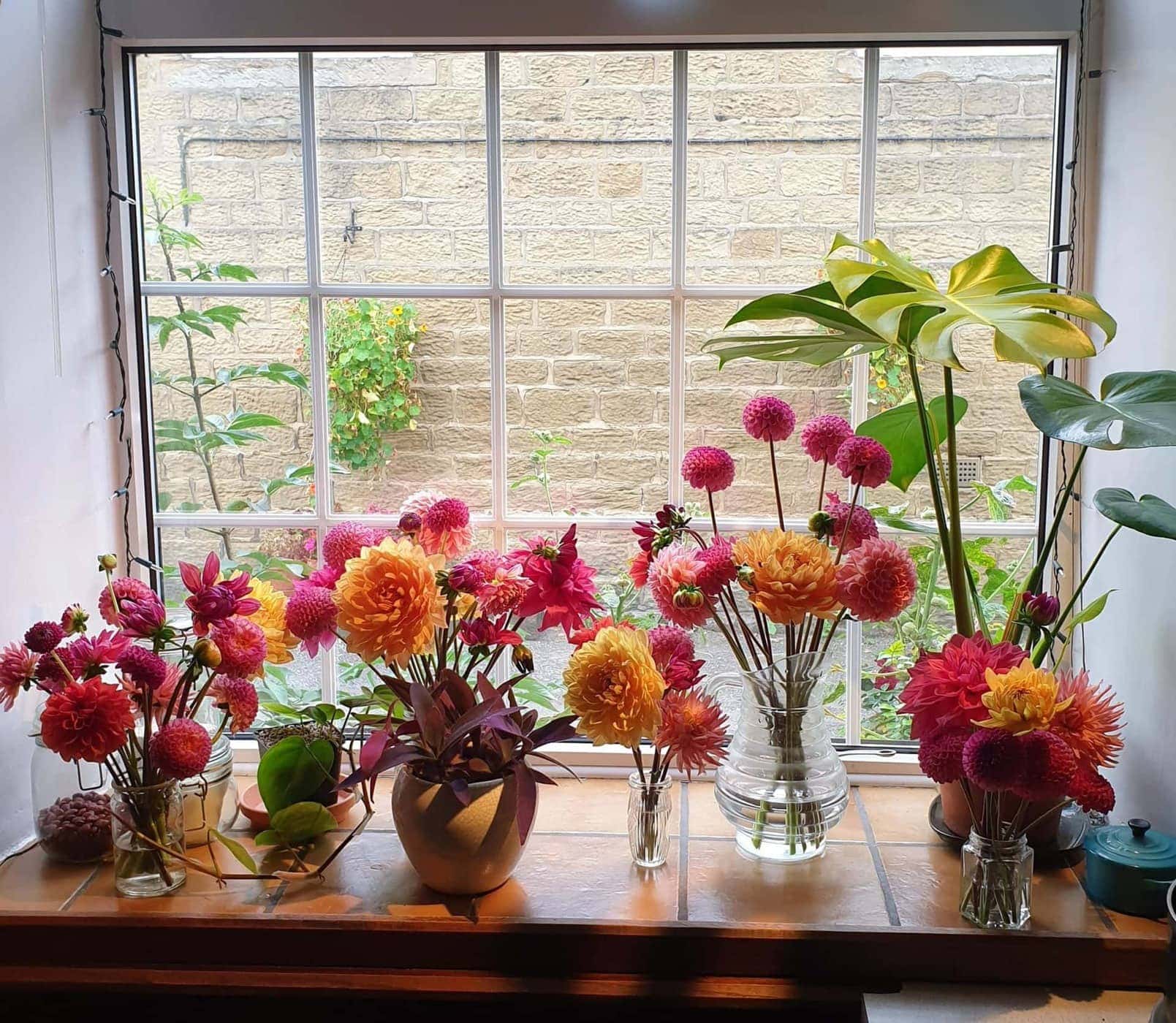
Growing dahlias: Notes on varieties
Dahlia ‘Preference’ and Dahlia ‘Henriette’ – I honestly can not tell the difference between the two. A good vase life, highly floriferous and came into bloom quickly, even on the plants grown from cuttings. Thin graceful stems.
Dahlia ‘Verrone’s Obsidian’ – Single flower dahlias (as opposed to doubles) seem to have risen in popularity, perhaps because they better fit with the naturalistic aesthetics en vogue, and their open centres allow pollinators to collect nectar. I’ll certainly grow this again for enjoyment in the garden, but the vase life is barely a day or two.
Dahlia ‘Mexican Star’ – As above, a stunning single flower with deep wine red petals and ochre centres, but a very short vase life as a result.

Dahlia ‘David Howard’ – Productive but not greatly so. A very welcome soft burnt orange that worked with both deep and pastel colours. Good vase life.
Dahlia ‘Burlesca’ – The most productive of all. Even the plants from spring cuttings gave huge numbers of heads for cutting. Seemingly endless blooms quickly produced, and they look great from bud burst for a good 10 days. Stems all a good length even without disbudding.
Dahlia ‘Linda’s Baby’ and Dahlia ‘Wizard of Oz’ – Both highly productive, from tuber and cuttings, with good vase life. Along with ‘Burlesca’, these three make a very subtle trio, creating a pale apricot, purple and pink multi-tonal effect, each picking up on the theme where another had left it. Their various stages of flower opening all blend into each other, at times it was hard to tell which was which, in a good way.

Dahlia ‘American Dawn’ – Huge multi-tonal blooms on pleasingly sturdy and strong deep purple stems. I grew this after seeing it in the famous cutting garden at Chatsworth the year before. Definitely my favourite of all, but sadly not a good cut flower, as their vivid colours fade quickly indoors. One to enjoy in situ.

Dahlia ‘Rancho’ – Second favourite after ‘American dawn’. Great cut flower and great in situ too. Good productivity given the large flower size. Medium thickness stems, strong and upright in a vase.
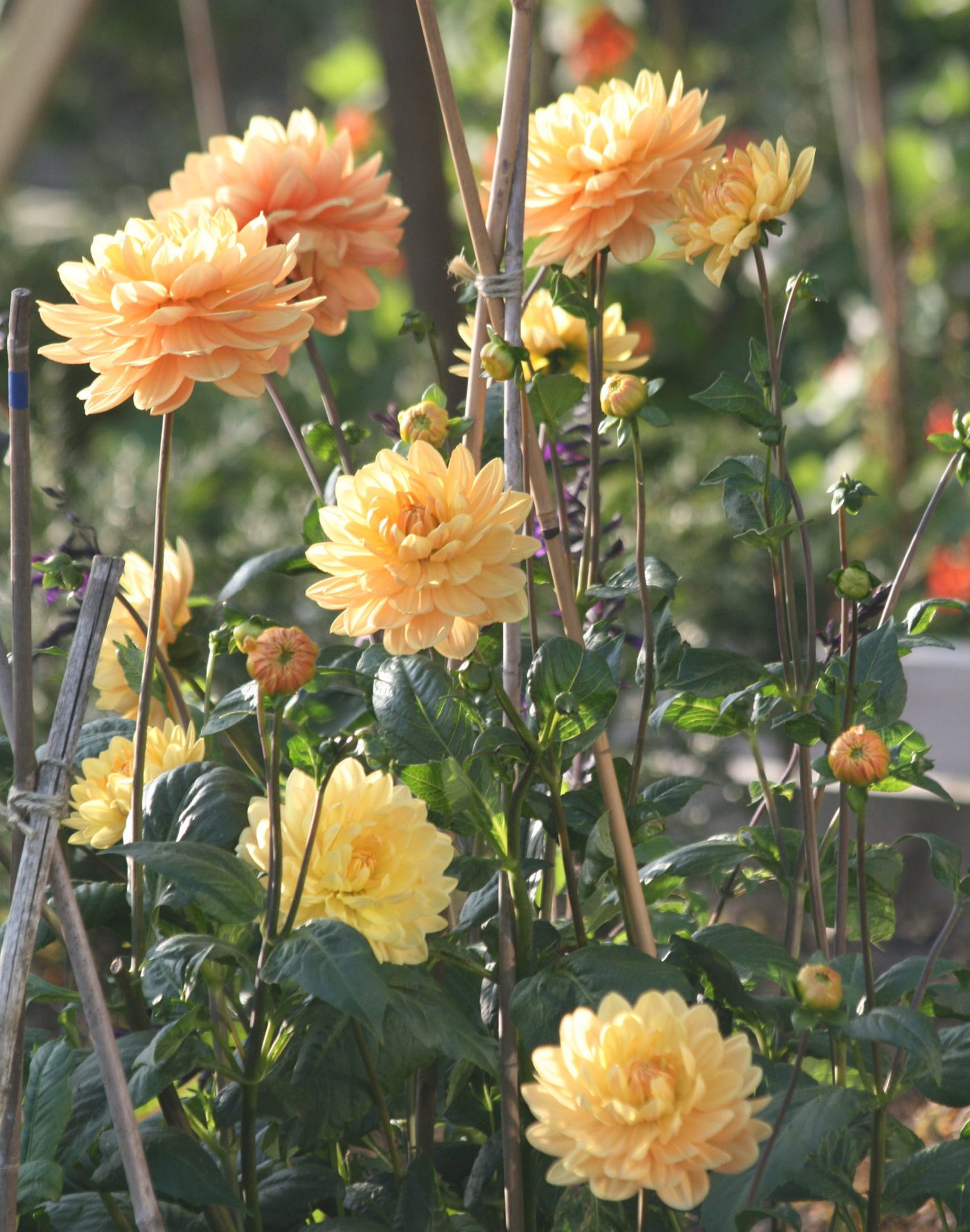
Dahlia ‘Black Jack’ – From two plants, I think I managed just 3 cut heads all season, but they were worth it. With very fleshy stems and big heavy buds, this variety suffered most from wind damage. Totally stunning, even just a single head in a vase did the job.
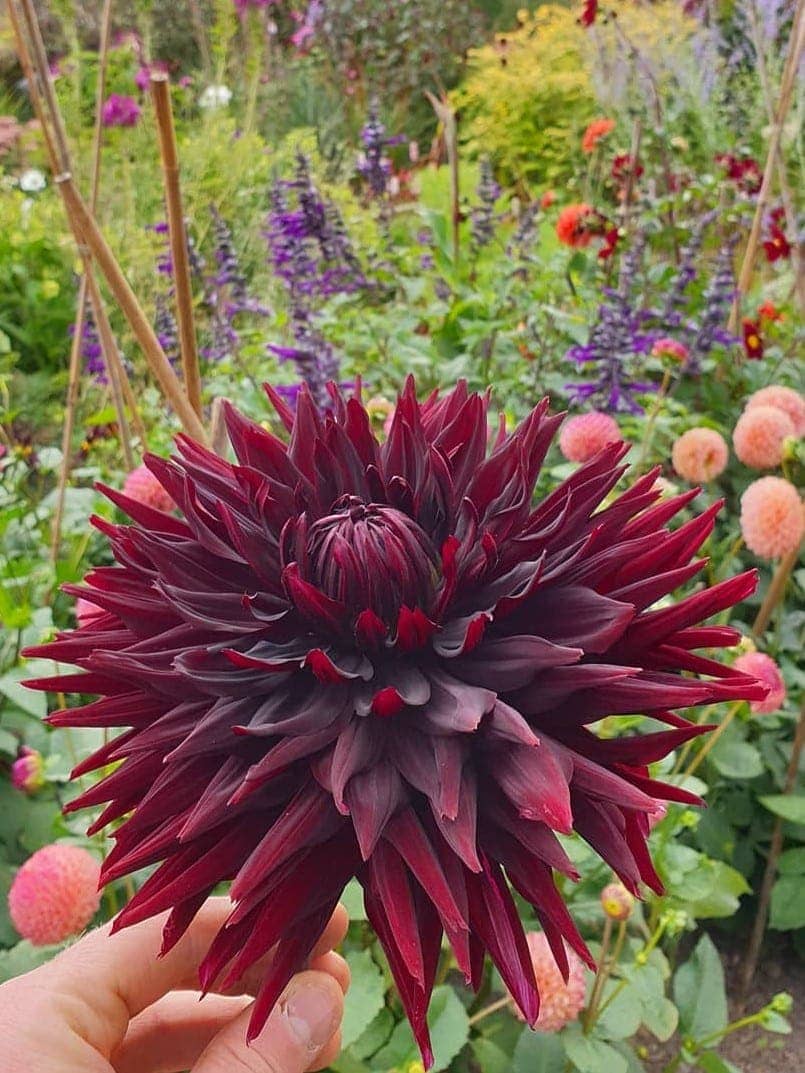
Growing dahlias: Behind the scenes
Knowing I wanted to take cuttings to bulk up numbers, I ordered the tubers for early March and started them off immediately, packed into trays with just enough compost to cover the tubers. They got a little water occasionally to keep the compost just slightly damp. A warm sunny windowsill got them shooting quickly. Some are always slow, be patient.
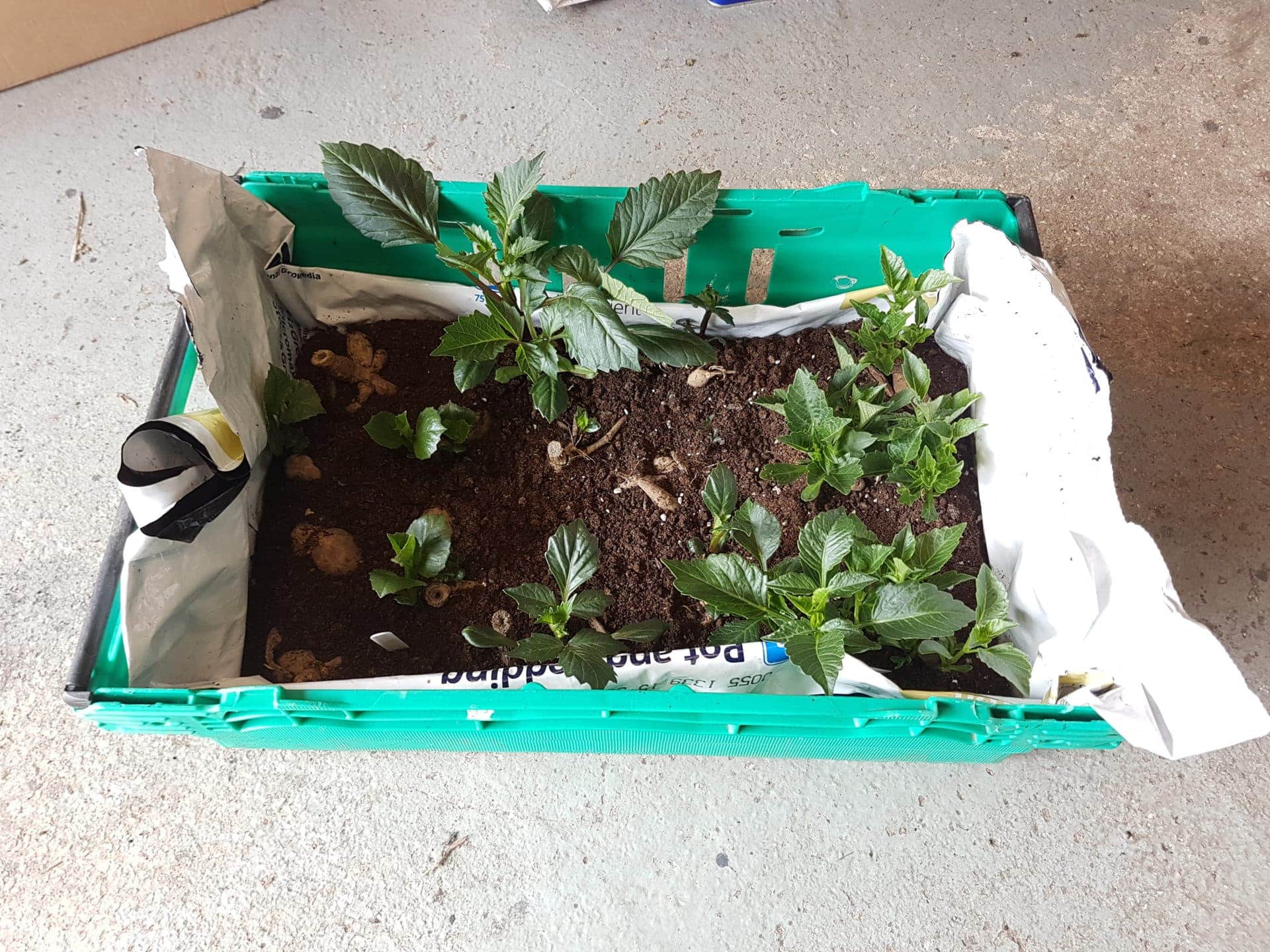
Traditionally, dahlia cuttings from new growth are cut form the base, so a tiny slither of the tuber is removed too. I found this type of cutting tended to sit without rooting for longer, sulking. Small tip cuttings seemed to work better, rooting and romping away quickly in a heated propagator. A warm and bright windowsill indoors would work too, but too much direct sunlight will frazzle them if they’ve not rooted yet.
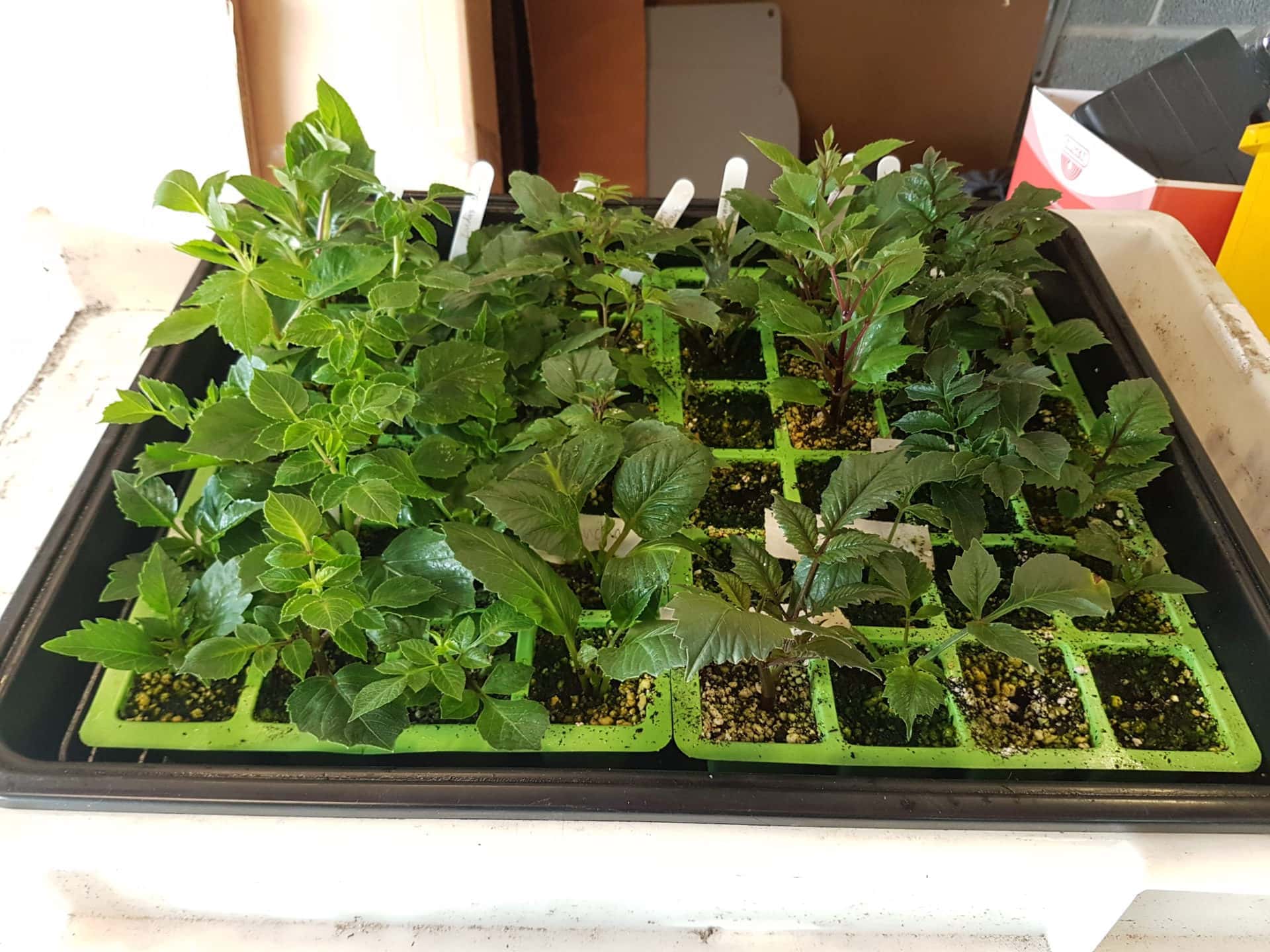
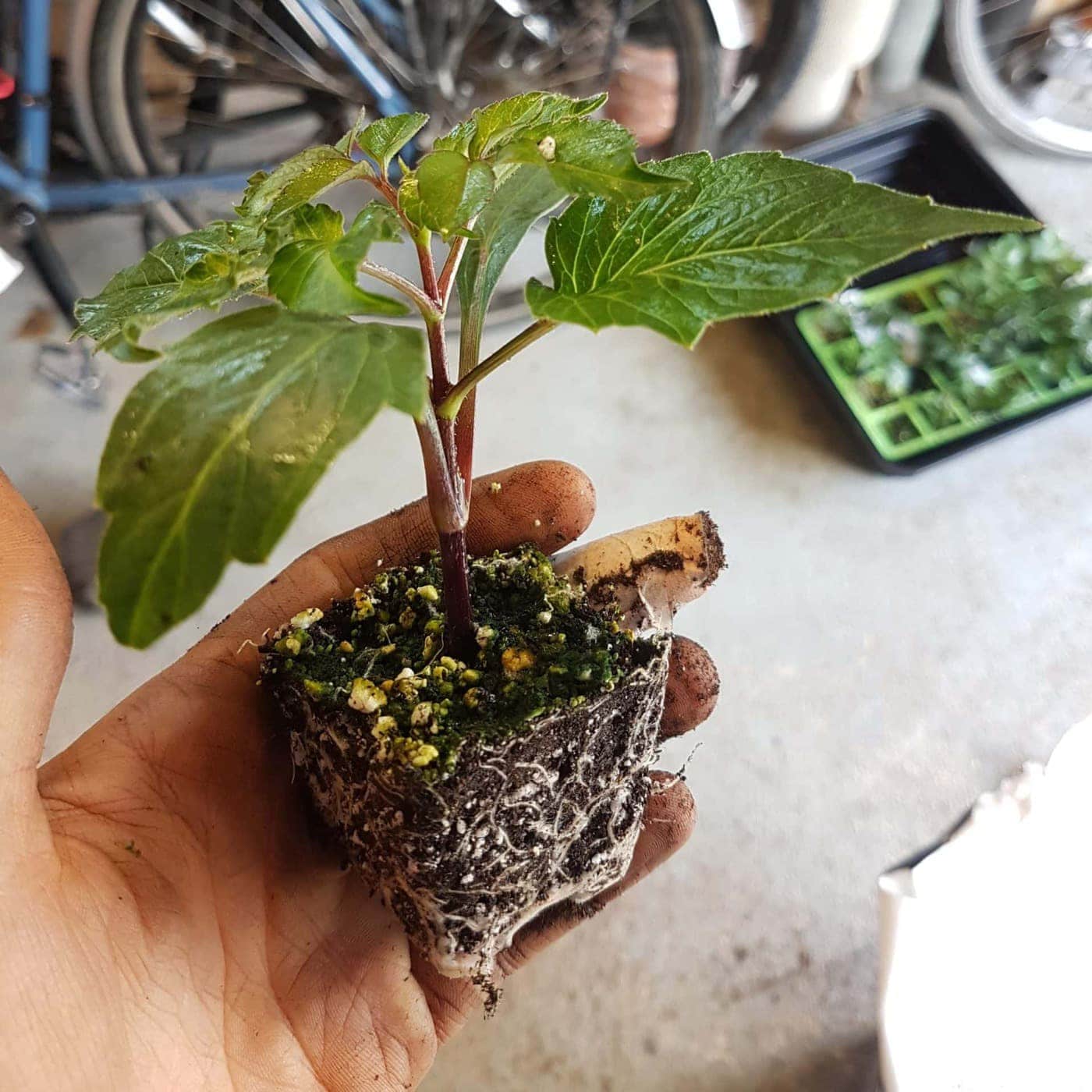
Once started off in the warmth of my home, tubers and rooted cuttings were potted up individually, in the smallest possible pots, and put into an unheated greenhouse. At this point, I divided any plants with multiple stems. The disturbance of lifting them from the trays and cuttings them in half, unavoidably breaking roots, did not seem to bother them at all.
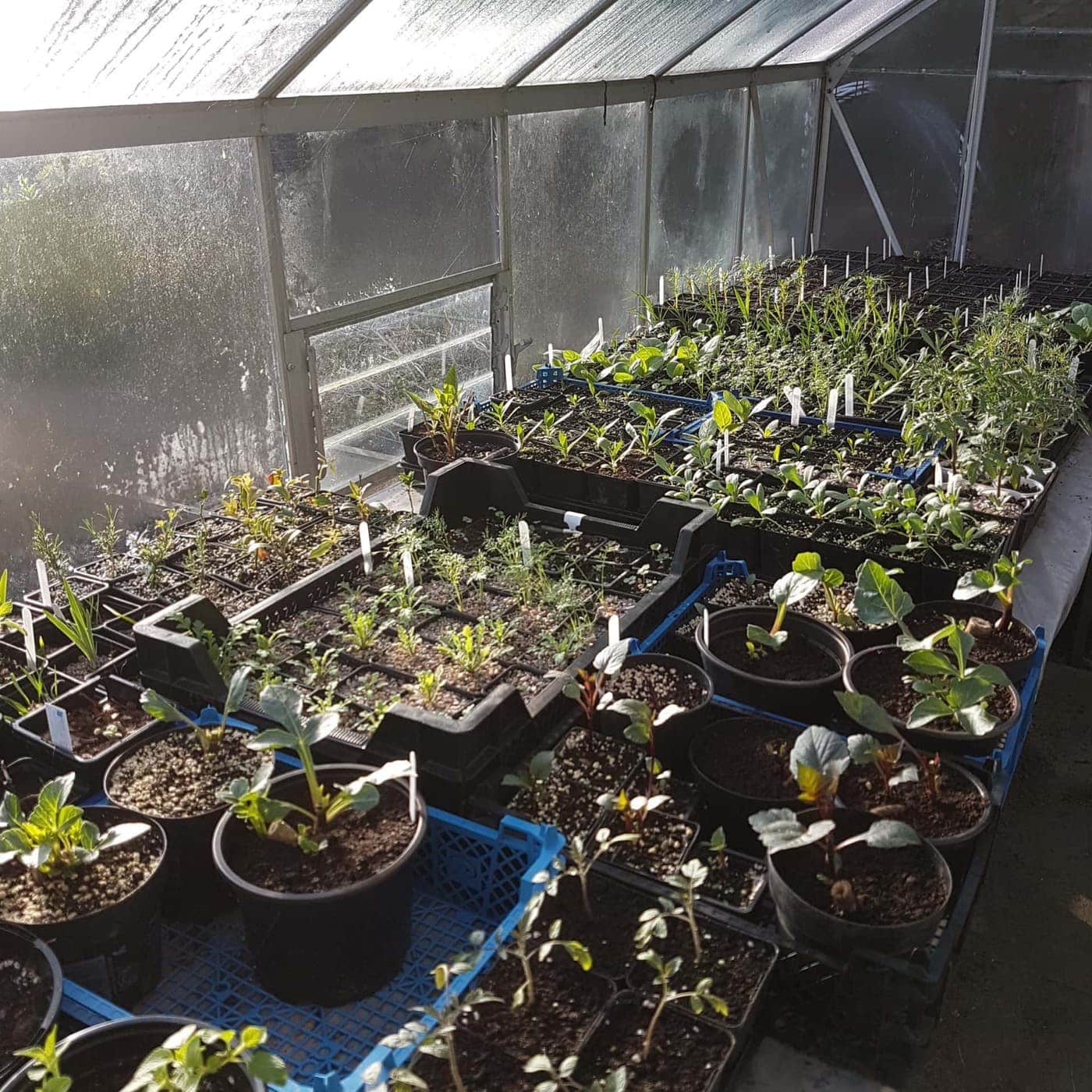
Everything was planted out at the start of June, gladly missing the late frost we had in May.
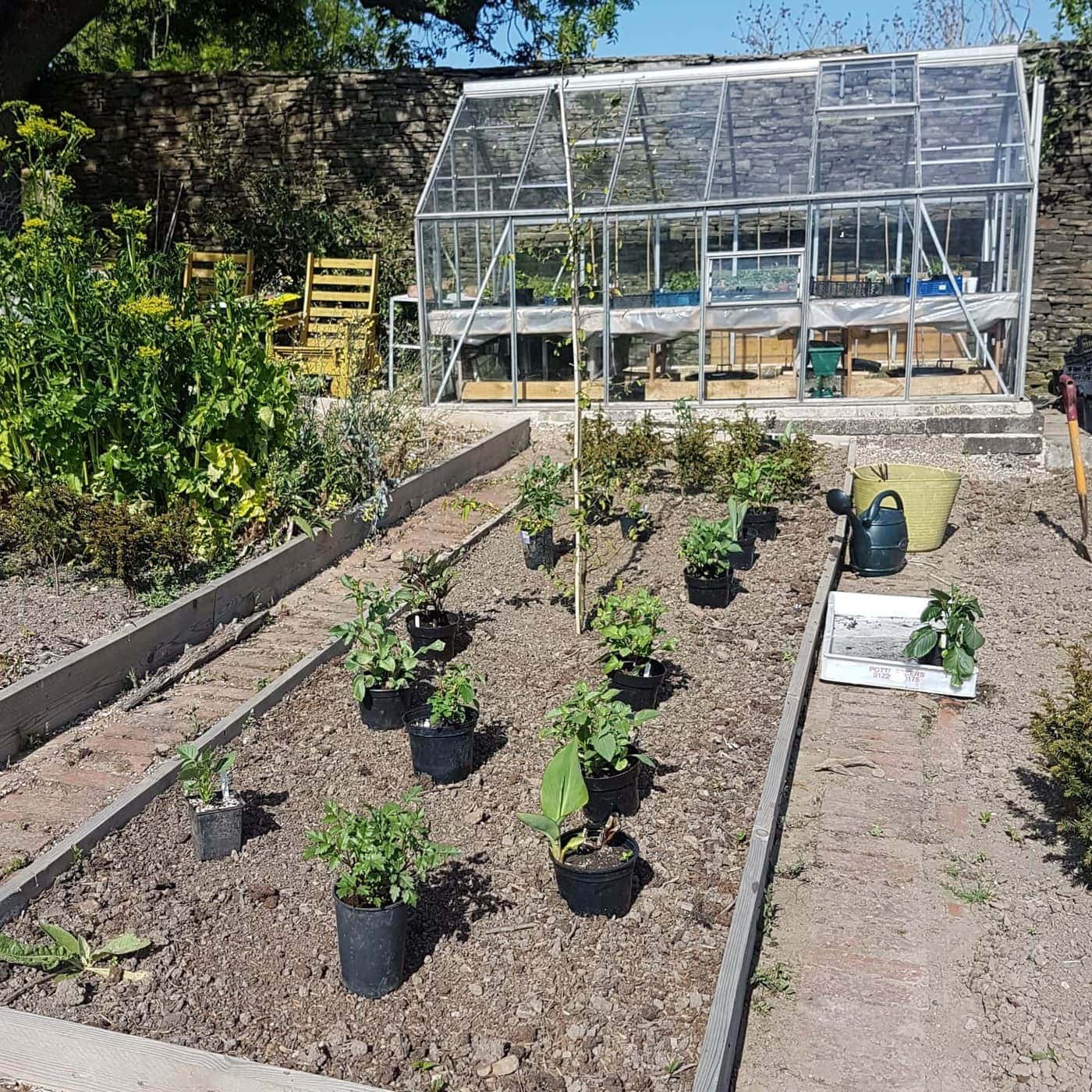
By the end of the season, and many buckets of flowers later, frost finally blackened the leaves in early December. They had flowered for 5 months from July. Given our exposed, fairly high altitude and latitude site, the dahlias were cut back and lifted for winter storage.
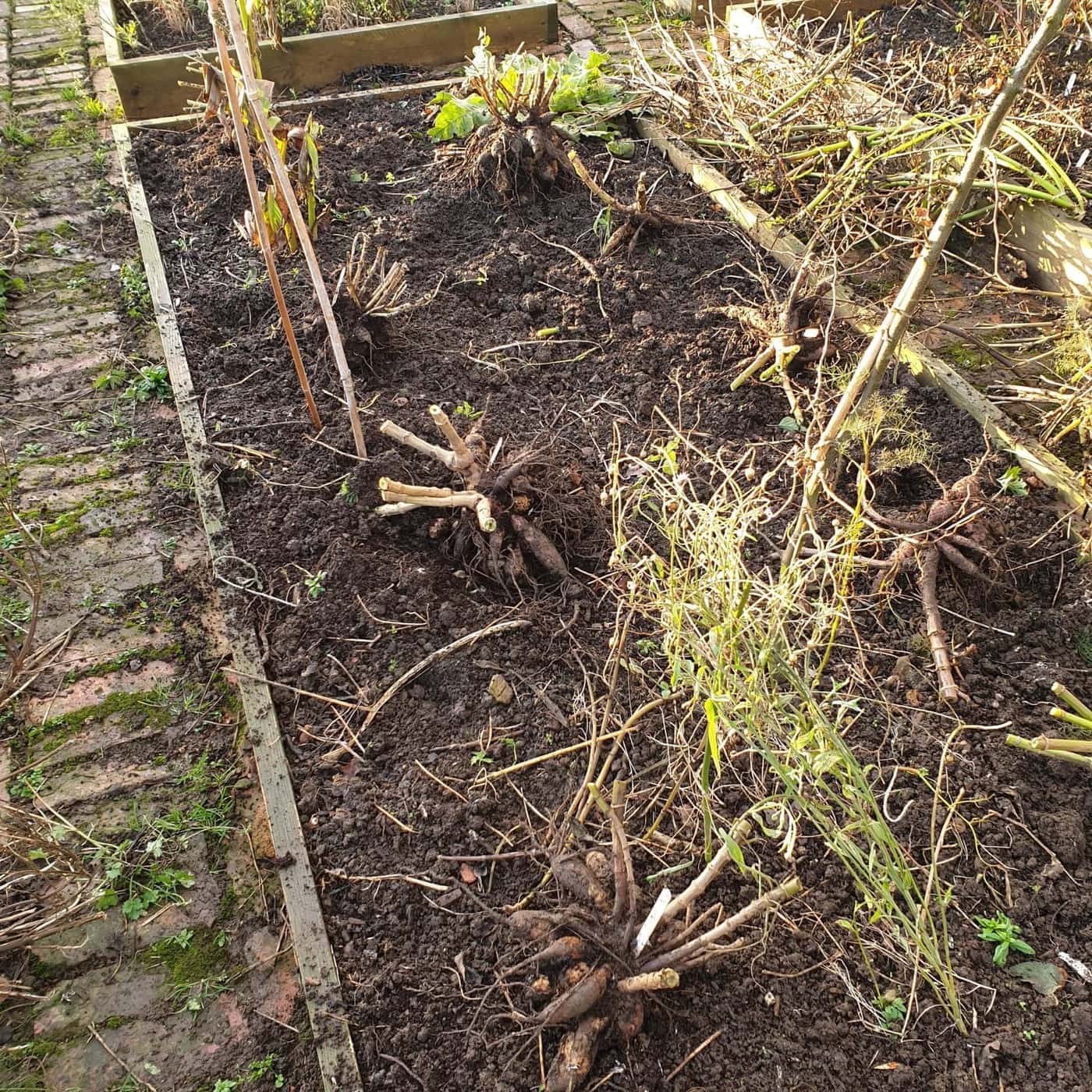
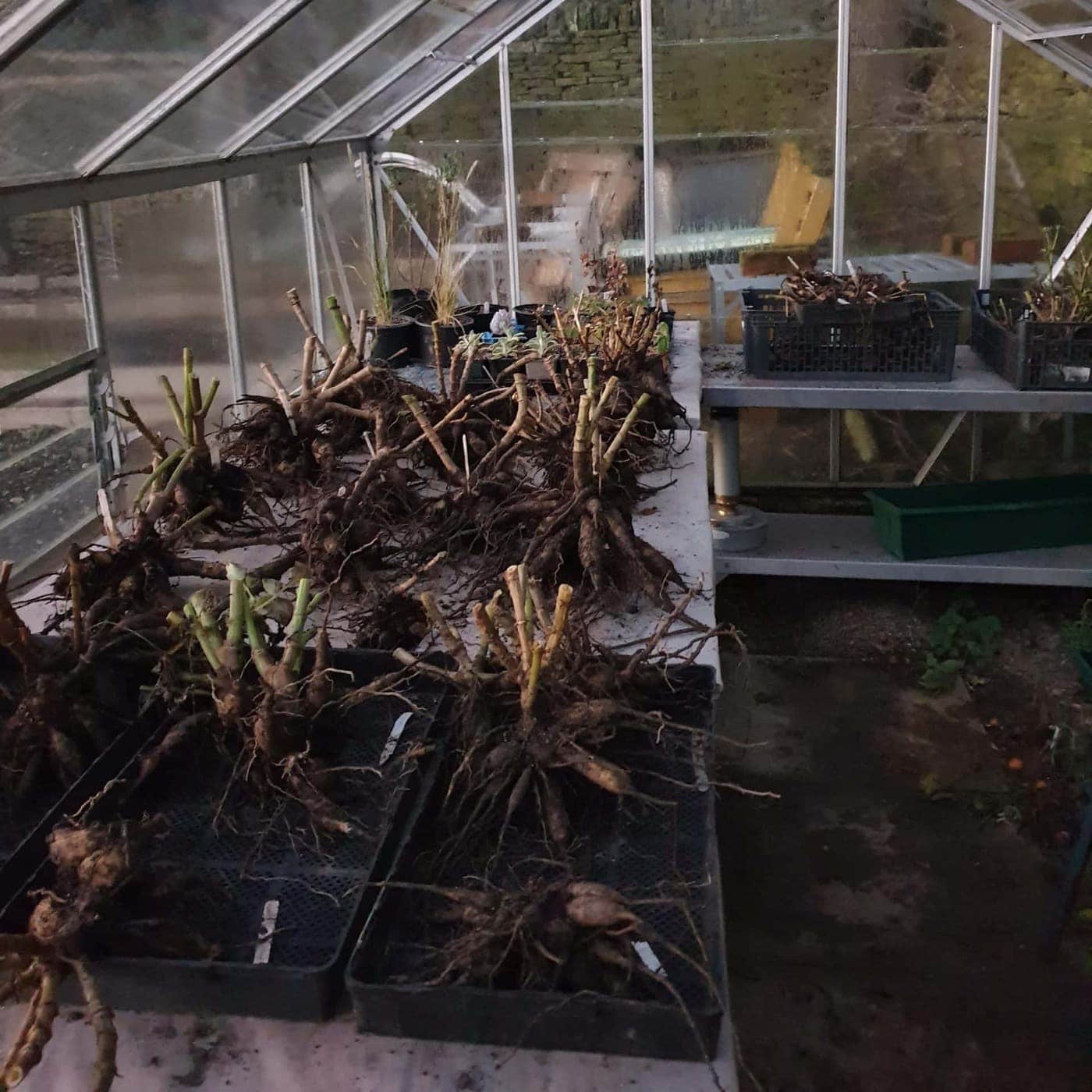
Now that I’ve got plenty of tubers and some to spare, I’ll risk leaving some in situ through the winter next year, with a thick mulch of course compost over the crowns to keep the frost off. While this is common practice in the south, we seem to regularly have a mild enough winter for it in our part of the north too.
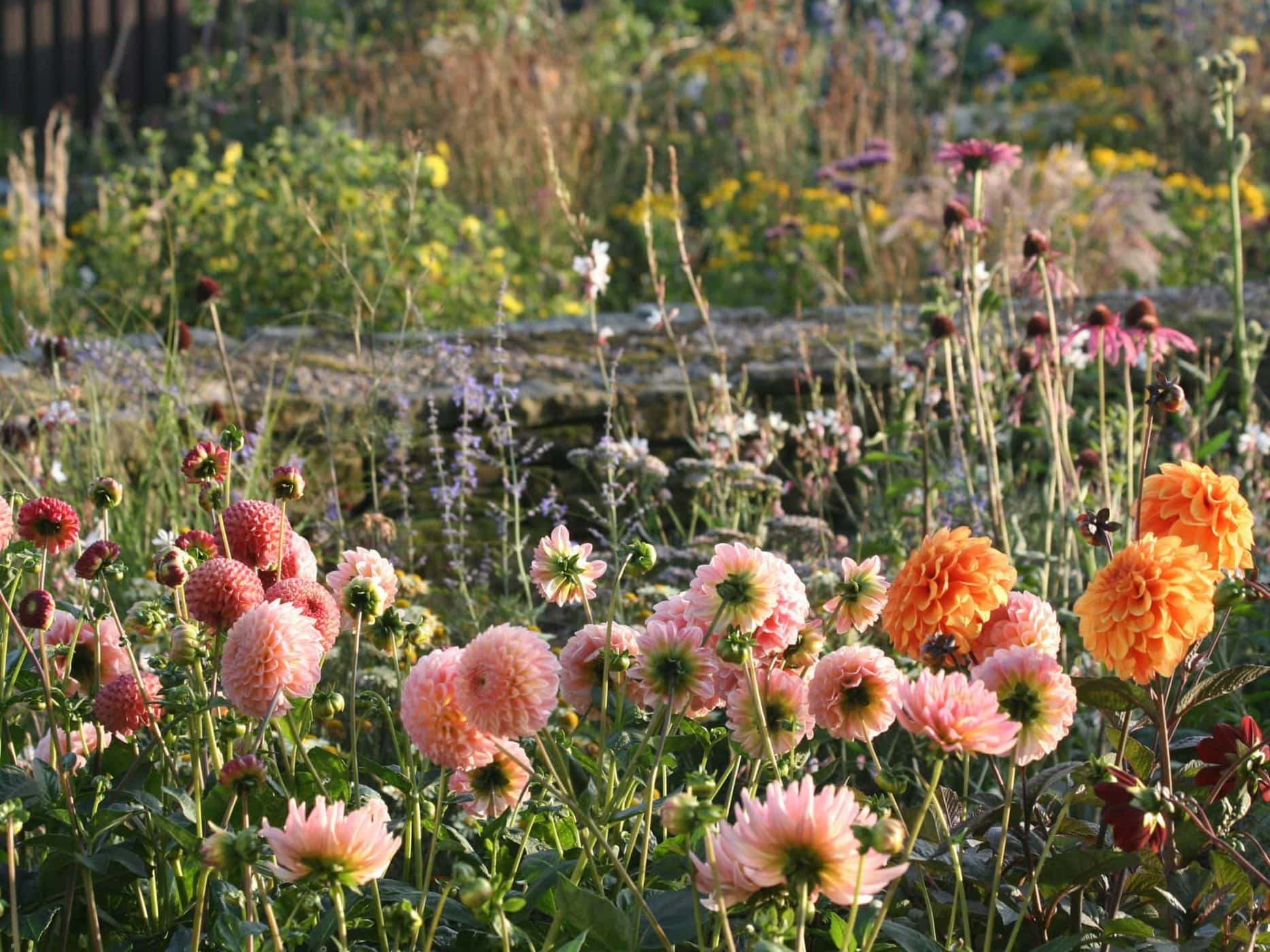
Now is a great time to starting thinking about growing dahlias, and placing orders for early spring delivery. Or see if friends can give you some cuttings or divisions. You can find invaluable help and advice on growing dahlias from the The National Dahlia Society Facebook Group, where expert growers share their wisdom.
Photography by Owen Hayman
Owen Hayman
Owen joined the Bestall & Co planting and aftercare team in spring 2019. He is an RHS qualified horticulturist, holding a full Level 3 Diploma in Horticulture, and recently came in the top 3 at the Northern Regional Final of The Young Horticulturist of the Year 2019. After first doing a foundation diploma in Fine Art, he went on to gain a degree and masters in Plant and Soil Science from the University of Sheffield in 2014. Owen worked as a researcher on various field research projects in Alaska, Panama and Borneo. When not away in the field, he became obsessed with visiting gardens and nurseries across the British Isles and the Netherlands, developing his own garden, and then taking on a walled allotment garden as a personal project. He realised his true passion was in horticulture, and so moved away from academia and into the world of specialist plant nurseries and professional gardening.
Owen is now studying the Wisley Diploma, but continues to write articles for us on a monthly basis, and we're delighted to maintain contact with such a passionate and knowledgable plantsman.

